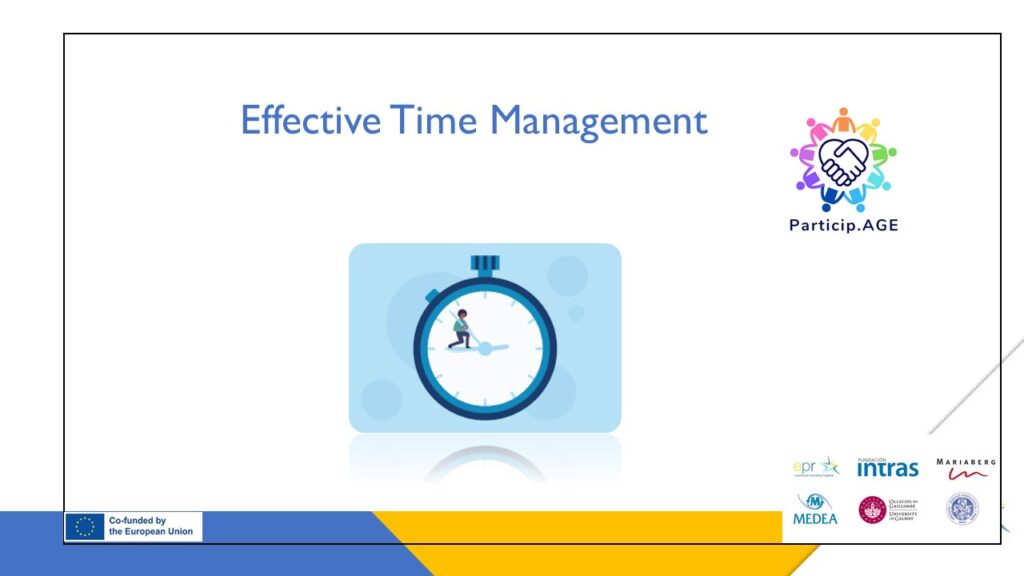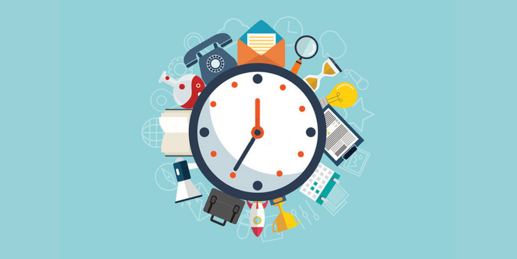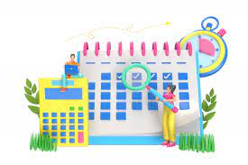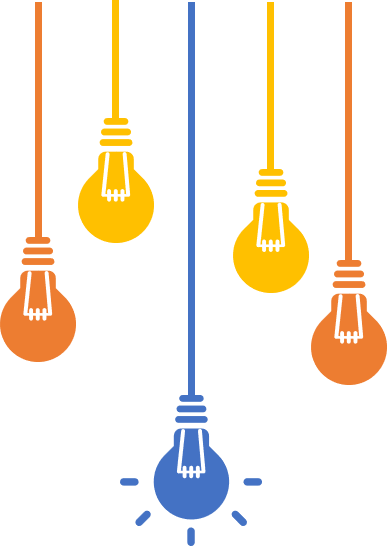
Objective:
The objective of this training session is to equip participants with practical strategies and techniques to enhance their time management skills, enabling them to accomplish more in less time and achieve greater productivity and work-life balance.
“Time isn’t the main thing. It’s the only thing.”
Miles Davis
Introduction to Time Management
Time management: the process of organizing and planning how to divide your time between activities effectively, to maximize productivity and achieve goals.
Why is this important?
•Enhances productivity and efficiency
•Reduces stress and overwhelm
•Improves work-life balance
Key elements:
•Setting goals and priorities
•Allocating time to tasks based on importance and urgency
•Minimizing time-wasting activities and distractions

Identifying Time Management Pitfalls
Time management challenges are common in both personal and professional settings.
Identifying these pitfalls is the first step toward improving time management skills.

- Procrastination:
- Delaying tasks unnecessarily leads to increased stress and missed deadlines.
- Example: Putting off important tasks until the last minute.
- Lack of Prioritization: Failing to identify and focus on high-priority tasks.
- Example: Spending excessive time on trivial tasks while neglecting important projects.
- Overcommitment:
- Taking on too many tasks or projects leads to overwhelm and burnout.
Example: Saying “yes” to every request without considering time constraints.
Assignment

Think about your working day:
Do any of these pitfalls affect your work?
•Procrastination
•Lack of Prioritization
•Overcommitment
•Poor Planning
•Distractions If so, what are the ways in which they affect your work?
Principles of Effective Time Management
Effective time management is grounded in certain principles that guide our actions and decisions.

Principle 1: Prioritization
Delaying tasks unnecessarily leads to increased stress and missed deadlines.
Identify and focus on tasks that align with your goals and objectives. Use techniques like the Eisenhower Matrix to differentiate between urgent and important tasks.
Principle 2: Goal Setting
Set SMART goals (Specific, Measurable, Achievable, Relevant, Time-bound) to provide clarity and direction.
Break down larger goals into smaller, actionable steps. Taking on too many tasks or projects leads to overwhelm and burnout.
Principle 3: Focus
Concentrate on one task at a time to maximize productivity and quality of work. Utilize techniques like time blocking to allocate dedicated focus periods for specific tasks.
Principle 4: Efficiency
Streamline workflows and eliminate unnecessary steps to optimize efficiency. Use tools and technology to automate repetitive tasks and improve workflow.
Principle 5: Flexibility
Remain adaptable and open to adjustments as priorities and circumstances change. Allow room for unexpected tasks and interruptions in your schedule.
Time Management Tools and Techniques
Various tools and techniques are available to help individuals manage their time more effectively.

Tool 1: To-Do Lists
Write down tasks and prioritize them based on importance and urgency.
Example: Using a simple notebook or digital task management apps like Todoist or Microsoft To Do.
Tool 2: Time Blocking
Allocate specific blocks of time for different tasks or activities.
Example: Using your calendar to schedule focused work periods, meetings, and breaks.
Tool 3: Eisenhower Matrix
Prioritize tasks based on urgency and importance, categorizing them into quadrants.
Example: Using a grid to classify tasks as urgent/important, not urgent/important, urgent/not important, or not urgent/not important.
Tool 4: Pomodoro Technique
Break work into intervals, typically 25 minutes of focused work followed by a short break.
Example: Using a timer or Pomodoro app to maintain focus and productivity during work sessions.
Tool 5: Technology Tools
Utilize various apps and software designed to enhance time management and productivity.
Example: Time tracking apps like Toggl, project management tools like Trello or Asana, and distraction-blocking apps like Freedom or Cold Turkey.
Overcoming Procrastination
Procrastination is a common barrier to effective time management, leading to delays and decreased productivity.
Procrastination is the act of delaying tasks despite knowing the negative consequences.
Root causes may include fear of failure, perfectionism, lack of motivation, or overwhelm.

Strategies for Overcoming Procrastination
Break Tasks into Smaller Steps:
Divide large tasks into smaller, more manageable chunks to reduce overwhelm.
Example: Instead of “write report,” break it down into research, outline, draft, and revisions.
Set Deadlines and Accountability:
Establish clear deadlines for tasks and hold yourself accountable for meeting them.
Example: Set self-imposed deadlines or share your goals with a friend or colleague for accountability.
Managing Distractions
Distractions can derail productivity and impede progress on important tasks.
Learning to manage distractions is essential for effective time management.

Identifying Common Distractions
External distractions: Phone calls, emails, social media, noisy environment.
Internal distractions: Negative thoughts, multitasking, lack of focus.
Strategies for Managing Distractions
Distractions can derail productivity and impede progress on important tasks.
Learning to manage distractions is essential for effective time management.

Create a Conducive Work Environment:
- Minimize clutter and create an organized workspace conducive to focus.
- Use noise-canceling headphones or white noise machines to block out external distractions.
Set Boundaries:
- Establish boundaries with colleagues, friends, and family members to protect your work time.
- Communicate your availability and preferred modes of communication to minimize interruptions.
Utilize Productivity Techniques:
- Practice the “two-minute rule” for quick tasks and defer larger tasks to designated time blocks.
- Implement the Pomodoro Technique to work in focused intervals with short breaks.
Developing a Personal Time Management Plan
Reflect on your current time management practices, identifying strengths and areas for improvement.
Consider your work style, energy levels, and peak productivity hours.

1.Goal Setting:
Define clear, achievable goals aligned with your values and objectives.
Break down larger goals into smaller, actionable tasks with deadlines.
2.Prioritization:
Determine tasks’ importance and urgency using techniques like the Eisenhower Matrix.
Focus on high-priority tasks that align with your goals and contribute to long-term success.
3. Time Blocking:
Allocate dedicated time blocks for specific activities, including work, personal projects, and relaxation.
Ensure balance by scheduling time for self-care and leisure activities.
4. Use of Tools and Techniques:
Select time management tools and techniques that suit your preferences and needs.
Experiment with methods like to-do lists, Pomodoro Technique, or digital apps to find what works best for you.
5. Flexibility and Adaptability:
Remain flexible and adaptable to accommodate unexpected changes and challenges.
Adjust your plan as needed based on feedback and evolving priorities.
Assignment
Think about your working day, please review the previous slides and consider these questions:

- How can I apply some of these techniques to remove distraction?
- How can I reduce procrastination?
- How can plan my time more effectively?
Summary
Effective time management helps to:
•Enhances productivity and efficiency
•Reduces stress and overwhelm
•Improves work-life balance
There are many techniques we can use to:
•Overcome procrastination, and
•Reduce distraction
Making a time management plan is a powerful approach, involving goal-setting, prioritizing, time blocking, and use of productively tools

.
